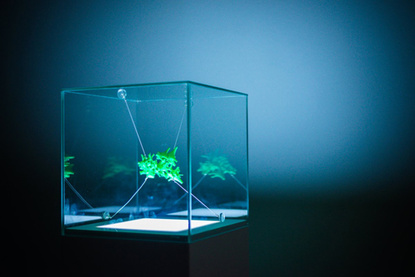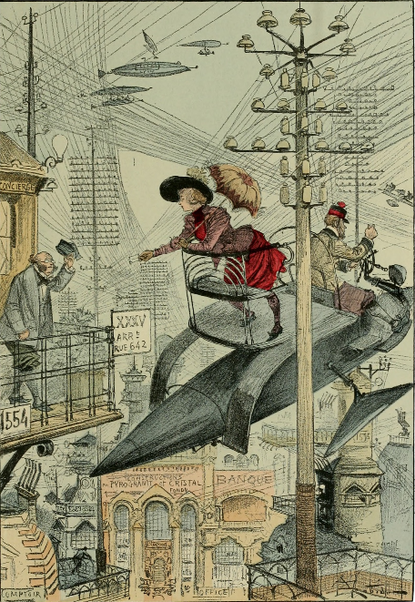Hanna Kryvolap: "My color combinations do not have literal interpretations"
The figurative abstraction of Hanna Kryvolap is poetic, musical and at the same time unusually close to the viewer, but the task of highlighting its iconic plastic elements is not the single one for the artist. The traces of reality, both as the separate images and suggestive forms, are not separated from her objectless art. Lyrical, full of allusions, paintings by Hanna Kryvolap reflect intuitive searches of the spiritual world, including the display of archetypes of Ukrainian culture and memories of non-biased reality.

Hanna Kryvolap
All images courtesy of the artist
Exhibitions of the artist with a hereditary talent are held in Ukraine, Georgia, Germany, the USA, Switzerland, Turkey, Japan and the Netherlands.
There is a model that obeyed to mythology in the storyline of your work; and there are ethnic motives in the rhythm of colors. What is the reason for using such a creative method?
Probably it happens due to the sensual perception of the world. Intuitivism is close to my perception, when emotional, aesthetic, mystical experiences expose true knowledge, acting as the secret facets of the Ratio. In my work I rely on my intuition to a large extent, which leads me somewhere in archaic depths. When I look at my paintings, for some reason it seems to me that I paint the same work all the time, so the projects are linked.

To my mind, in your artistic practice you release the color from the forms of reality, transferring the functions of music to the painting. Is it so?
Indeed, at some point I was fond of finding a connection between music and painting, but later artistic practice brought me back to the purity of form again. I can’t say that I leave it, because the academic school, even subconsciously, seeps into the canvas, focusing on the study of the problems of light and space, which, in my opinion, is an important core in the work.
You declare the color as the main means of artistic expression. Why?
Painting is exactly that kind of art which is associated with the transfer of visual images through the application of paints. Therefore, the emotional component of the work is expressed by color. The search for the wish starts in variable combinations to produce certain psychological state. Even comparison of the two colors should be maximized in order to get the effect of attracting the viewer into the imaginary space of the idea. My combinations of colors do not have literal interpretations. In difficult moments of life my colors were even more furious and bright, and for some reason there were shades of black in my work while I felt peace and coziness. The fact is that the creative and life biographies are not always consonant, probably because of the artist's actual attempt to distance himself from his problems, moving toward the projection of collective experience.

Horizons Berlin 2 (fragment)
Your art is often compared to the art of your father Anatoliy Kryvolap, one of the most expensive Ukrainian landscape painters. It seems to me that your works have almost nothing in common, except some color solutions. The plot and composition are very different. Isn’t it so?
My father is one of the first artists in Ukraine, who decided to use bright colors. Therefore, my work with expressive colors was laid down on the genetic level (laughing). Concerning similarity, it is perceived at a fairly primitive level, comparing the color and devotion to figurative abstraction. In fact, my father's landscapes are a huge, mathematically accurate and aesthetically perfect study of the Ukrainian lyrical landscape. My works are different; they are not so much psychological, but emotional.
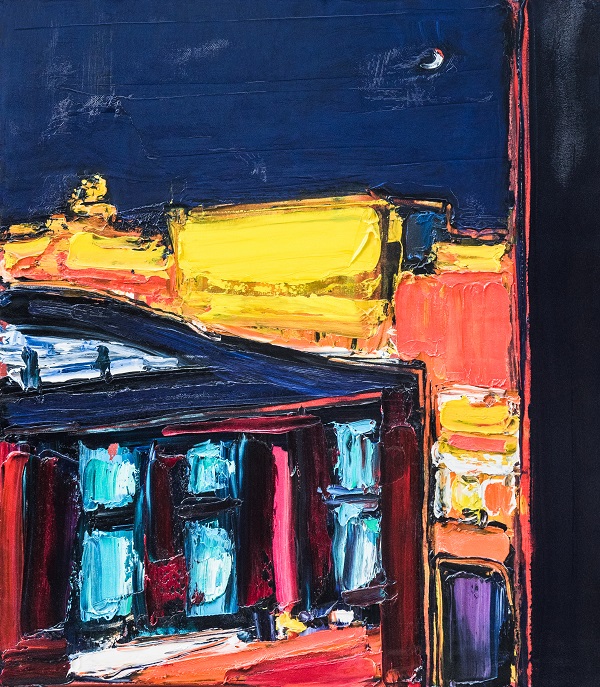
Horizons Kiev 1
What problems are included in the range of your artistic interests?
I notice that I am attracted more and more by what is connected to archaism and national identity. "Wells", "Horizons of Cities" and "Ribbons" are just about that. The last work generally matured about 10 years before splashing out into a large-scale painting project. Every time, passing by the ribbons, romantically spreading with the wind at the entrance to Yagotin, I wondered how to convey my impressions to the viewer. Each of these ribbons, like people, has its own destiny. Some of them are torn off by the wind, and they fly away; others are dusted and blackened, and there are those that are colorful, which seem to exude joy. In fact, in art we must preserve ethnic identity, while being aware of ourselves as a part of this world.
But anyway, there is a line between the search for national identification and grounding in collective narcissism.
The question of real creativity is about different things. While working I do not think about any identification or about my ethnic and cultural selectivity. I just try to follow what's going on inside me with no idea where I'm going to get with my painting. It is useful for us (artists and for art itself) to learn how to fit into the global cultural process, to integrate, getting rid of isolation gradually. The world has heard little about us (Ukrainian artists), therefore it is necessary to be exhibited more often abroad. One collector offered me an exhibition in one of the best galleries in Frankfurt (Germany), they recognized my works as worthy ones, but all negotiations with them were somewhat apprehensive just because the painter (me) was from Eastern Europe and they almost did not cooperate with us. Often, Ukrainian art is not separated from the Russian one. It happens due to the fact that no one knows our history or the history of our art, so they try to connect us with something more or less familiar. This, of course, is a negative moment, but eventually everything will fall into place.
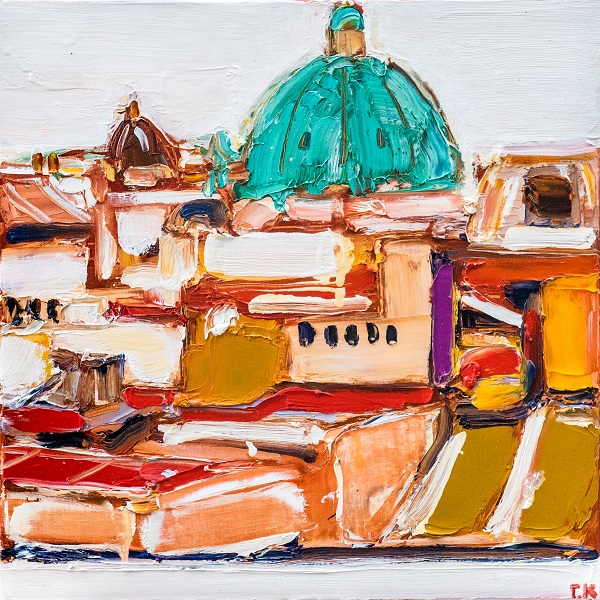
Horizons Roofs of Vienna
Are the principles of spontaneous painting decisive for you?
Yes, because intuition, as an instrument of cognition, is involved in my work in full. I think it needs to be trusted. I resort to this spontaneity not on purpose as well. I just try to move to what the canvas dictates, to choose the colors and images that appear in my imagination. Emotional painting does not require logic, but some tension, deepening and contact with your own subconscious. My abstraction is figurative, what I paint is connected to reality.
In the early theories of abstract painting it is said that it expresses transcendent idealistic essences, but at the same time the autonomous meaning is given to the primary elements. Is it like this now?
It seems to me that there are two kinds of abstraction: when you work in a dark room with bright colors and when you create a composition using the verified elements; and the mission of abstraction today is different from the original one.
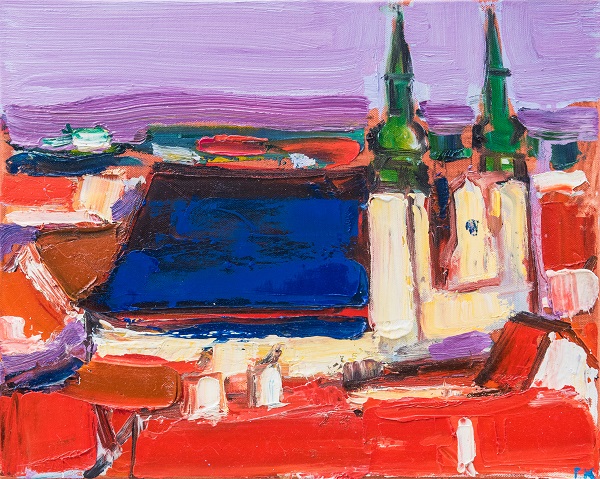
Horizons Vienna Cathedral
Could you please describe the artistic-aesthetic periods of your own art briefly?
Until I was 13 I was engaged in abstract watercolors, using them with the forms of Ukrainian costume. With these works I was invited to Tbilisi for a large personal exhibition. Then I studied at the academy, continuing experiments with abstraction. Subsequently, there was a period of enthusiasm for body art: we created interactive performances with ballet dancers. Later in the "Figures" project the pictures from the dance-floor reflected the interaction of space and subject, color and music. "Wells", "Horizons of cities", "Ribbons" series have appeared later and I continue them to this day. But in general, I can still say that while being a child I started my experiments with color and its aesthetics, the form was secondary. During academic time I went over to abstraction and study of color, its emotional-psychological qualities. And only then with this awareness and sharp skills I returned to the figurative, imposing an emotionally-psychological state on a specific image.

Blossom 2
Abstraction is often replicated. What is your attitude to the mass-market art?
I have never replicated my works, because by repeating them you lose the emotional impulse. I can copy well, I had good teachers, my father was one of them who said: "If you do not acquire the academic program perfectly, we'll send you to a culinary school" (laughing).
Do you think that an academic education is sorely needed for artistic practice?
Now I plan to make a figurative series, and I am sure that I will succeed. If you have a technique, you can experiment in any flatness without limiting yourself in means or directions. For a modern artist it is just as important as for artists of past generations. I adhere to the conservative idea that form is no less important than idea. And if it is just an idea, then why not leave it at the level of philosophy or science?

And finally, please tell us about the exhibition projects, which you are preparing now.
"Color" project at the Council of Europe in Strasbourg is being completed now.
"New Horizons" will take place in August 2018 in Barbara Von Stechow Galerie, Frankfurt.
"Interpretations" project is planned for September 2018 in Montenegro.
I'm preparing to exhibit "Horizons" new project in October 2018 in Kyiv National Picture Gallery.


